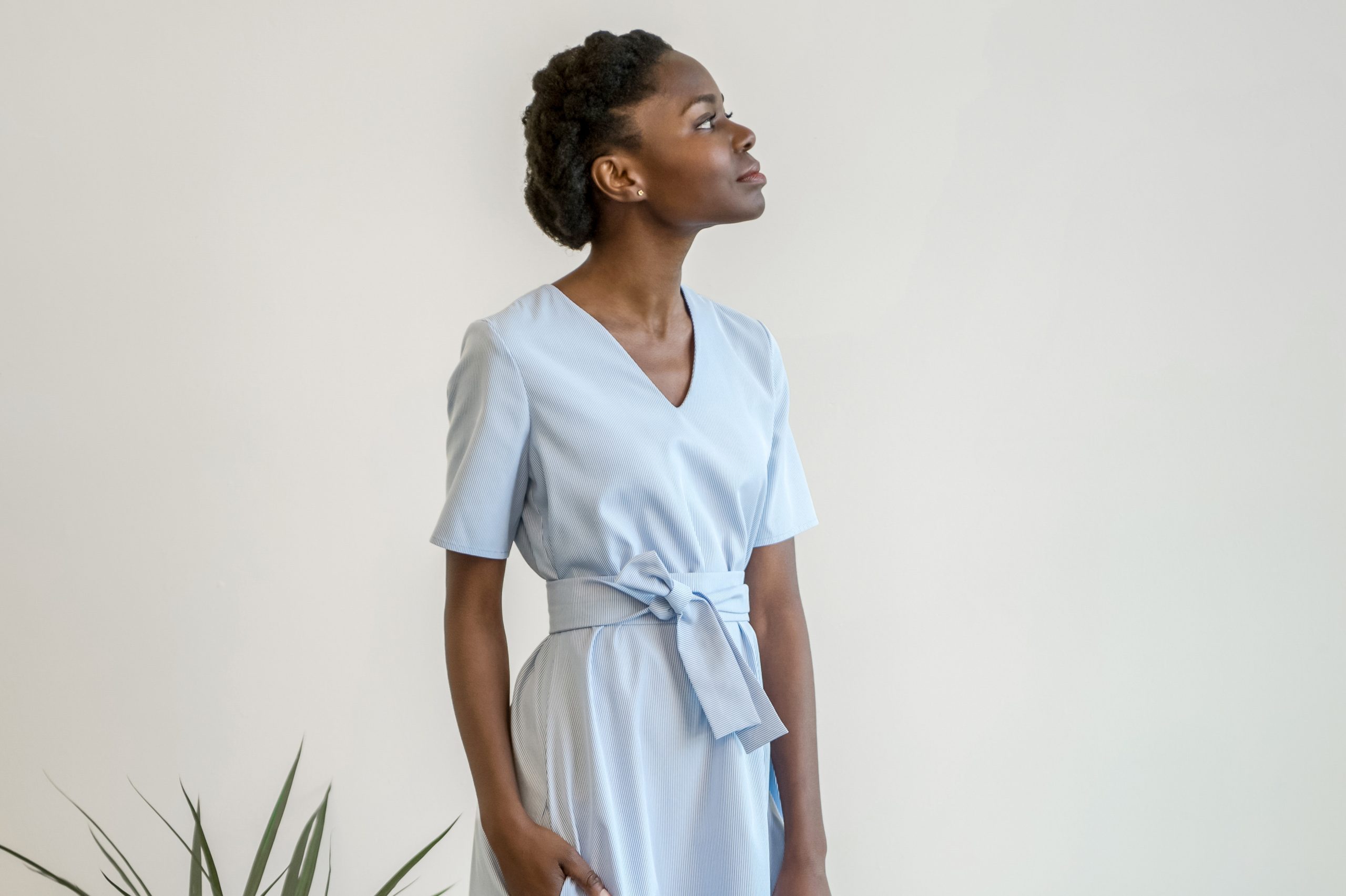Designers React to Post-Pandemic Fashion Trends

At this point, everyone has a favorite pair of sweatpants — the tried-and-true ones that served as a sort of security blanket during a time of tumult and uncertainty. But as the world enters a post-pandemic era, fashion experts wonder whether these beloved sweatpants will walk into the future of fashion or be left behind in a donation pile.
Elka Stevens, associate professor and coordinator of fashion design at Howard University, says it could go either way. Some people will trade in their comfy clothes for more elaborate statement pieces, while others will continue to shop for comfortable yet stylish clothing in the form of athleisure wear and loungewear.
In particular, Stevens says the work-from-home video call behavior of dressing to impress from the waist up while wearing comfy bottoms is a trend that will continue in the future.
“I think in part, there are going to be remnants of Covid that [will] stay because we have this phenomenon of dressing [from the waist] up. I think there’s going to be additional attention to dressing up from the waist up because of online engagement, [and] in turn, that means casual athleisure. Comfortable clothing from the waist down is going to be around for a long time as a result of this.”
The fashion professor prophesizes this dressy-casual fusion will be heralded by innovations in the performance textiles department due to the growing need for material that presents a polished image while remaining breathy and comfortable.
Mimi Miller, founder and designer of Mimi Miller, Womenswear, says she’s noticed more elevated looks and less athleisure wear on the streets as we edge closer to post-pandemic life. Personally, she’s excited for the return of dressier looks.
“[I’m] someone who loves to put on a nice outfit every day because I feel like it’s a direct reflection of my mental health and outlook on the day,” she says. “I love the idea of people wearing statement pieces on a day-to-day basis.”
But at the same time, Miller is also looking forward to the juxtaposition between casual and extravagant styles as people experiment with combining fashionable pieces and comfortable ones. She’s also noticed the same “dressing-from-the-waist-up” trend that Stevens brought to light. On Instagram, Miller saw several posts of women pairing blazers with sweatpants.
Along the same lines, artist and designer Evan Ibrahim says the elevation of comfort clothing into fashionable pieces has to do with creative expression brought on by pandemic isolation and boredom.
“I think now, more so than ever, people are going to use [fashion] as a form of expression,” he says. “I see more people taking risks they might not have taken before because they have a different outlook on life or a different perspective. I want to see people use fashion as an expression and be a little more daring.”
Ibrahim says that during lockdown, he noticed that many people picked up embroidery and sewing as a hobby, leading them to elevate and upcycle looks they already owned. He hopes to see this trend of sustainability continue.
“I love this new era of people wanting to learn [how to sew] and then also be sustainable, use what’s around them, and combat a lot of issues happening with our environment and the fashion industry.”
This sustainability trend also extends to the catwalk. In an act of defiance against the fast-fashion industry, Gucci announced last year they would no longer produce seasonal collections and instead only release two “seasonless” collections annually.
Joelle Firzli, CEO and curator of Tribute, says Gucci’s move to reduce its carbon footprint was brought on by pandemic production restrictions, and she hopes other designers will follow suit.
As for the collections themselves, Firzli says designers always pull inspiration from what’s in their immediate surroundings — and being secluded for more than a year has led to some interesting designs centered on the idea of departure from reality.
“When for one year you’re stuck at home, I think that counterreaction is escapism,” Firzli says. “It’s about escaping. It’s about dreaming. It’s about fantasy.”
But this isn’t the first time the world has seen fantastical, dreamy and escapist looks emerge after a harrowing event. As a fashion historian, Firzli has noticed parallels between where fashion is headed today and trends that appeared in 1920s America after the Spanish Flu of 1918 and even during the aftermath of the French Revolution in the late 18th century.
Firzli can’t predict the future, but with the context of history in mind and insight into the past, she is confident the coronavirus will have a lasting impression on fashion as we know it — whether that means a continuation of comfy couture or an outburst of creative expression.
“We talk about it and relate it to newness and a cycle of change, but really fashion is a lot about nostalgia — a sweet nostalgia,” Firzli says. “When you look at what happened in history, you always see patterns.”
Mimi Miller, Womenswear: shopmimimiller.com // @shopmimimiller.
Tribute Collective: thisistribute.com // @thisistribute
Learn more about Ibrahim and shop his designs at metamorphosedc.com // @ibrahime.

